City
Discovering ancient religious houses
"Open Conventos" opens doors on May 24th and 25th
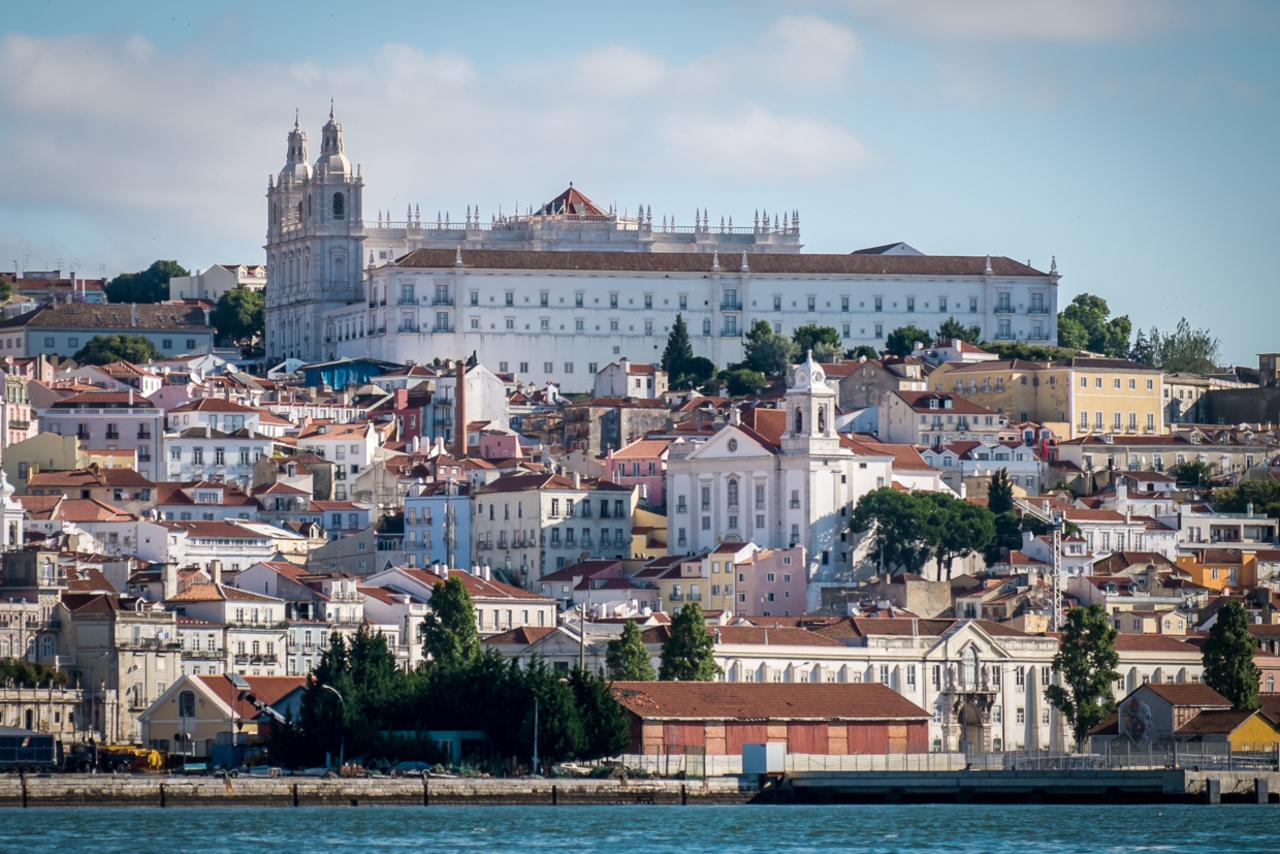
The best way to protect is to make it known. This is the belief of Open Conventos, an event organized by Santa Casa da Misericórdia de Lisboa, Câmara Municipal de Lisboa and Quo Vadis Lisboa (Tourism - Patriarchate of Lisbon) with the support of the Institute of Art History of Universidade Nova, which has opened the doors of convents and monasteries in the city for free visits or visits led by specialists.
This year, Open Conventos begins on the 22nd, with a presentation to organizers and partners, followed, on the 23rd, by a conference at Brotéria (from 5 pm), and the screening of the film Into Great Silence by Philip Gröning, about monastic life in the Grande Chartreuse monastery, motherhouse of the Order of Carthusians (Convent of São Pedro de Alcântara, at 8:30 pm).
On May 24th and 25th, former and current convents and monasteries open their doors to the general public who can also, through the website quovadislisboa.com, set out on a free route to discover a true network made up of this unique heritage of Lisbon. With the precious help of Quo Vadis Lisboa, we propose a brief look at five important religious houses in the capital that you can discover in detail in this edition of Open Conventos.
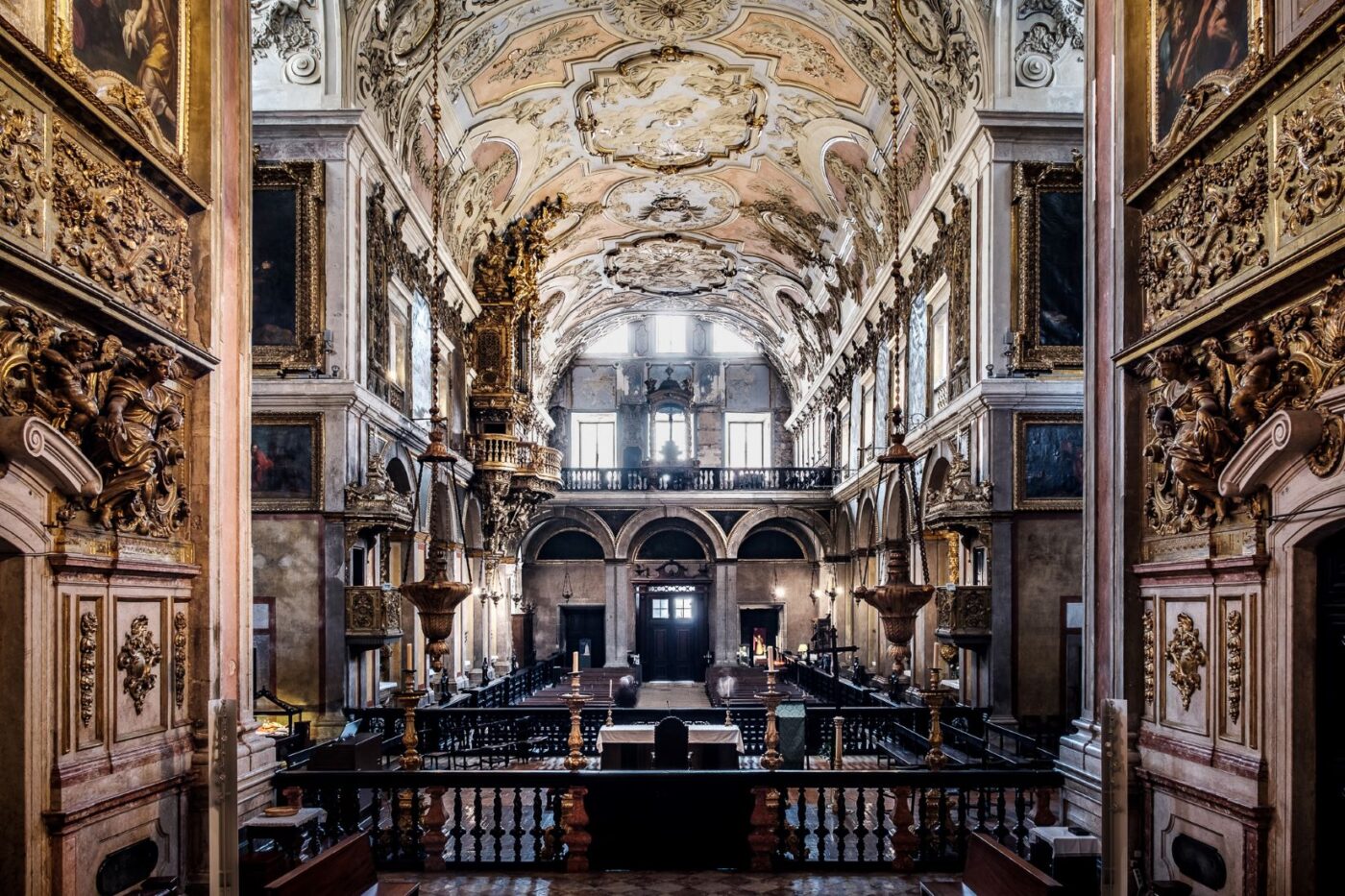
Mosteiro do Santíssimo Sacramento
Calçada do Combro, 84
This majestic example of Johannine Baroque is currently the Parish Church of Santa Catarina and the headquarters of the GNR District Command. It began to be built in 1647, having received the first 30 religious of the São Paulo First Hermit Order, from Serra de Ossa in Alentejo, in 1649. A few years later, the church began to be built, consecrated as a temple in December 1680 in a ceremony where King D. Pedro II may have been present.
The 1755 earthquake caused extensive damage to the church, with the stone vault collapsing. The new ceiling of the nave and sacristy received a monumental stucco decoration by the Swiss master plasterer Giovanni Grossi, highlighting also the canvases by André Gonçalves (c.1685 -1762) – a very important artist in the collection of the Casa Professa de São Roque – and Vieira Lusitano (1699-1783). In 1835, it became the Parish Church of Santa Catarina.
In addition to the treasures displayed in the sacristy, a panel of tiles from the beginning of the 18th century, representing episodes from the life of São Paulo Ermita, is one of the many attractions for the visit.
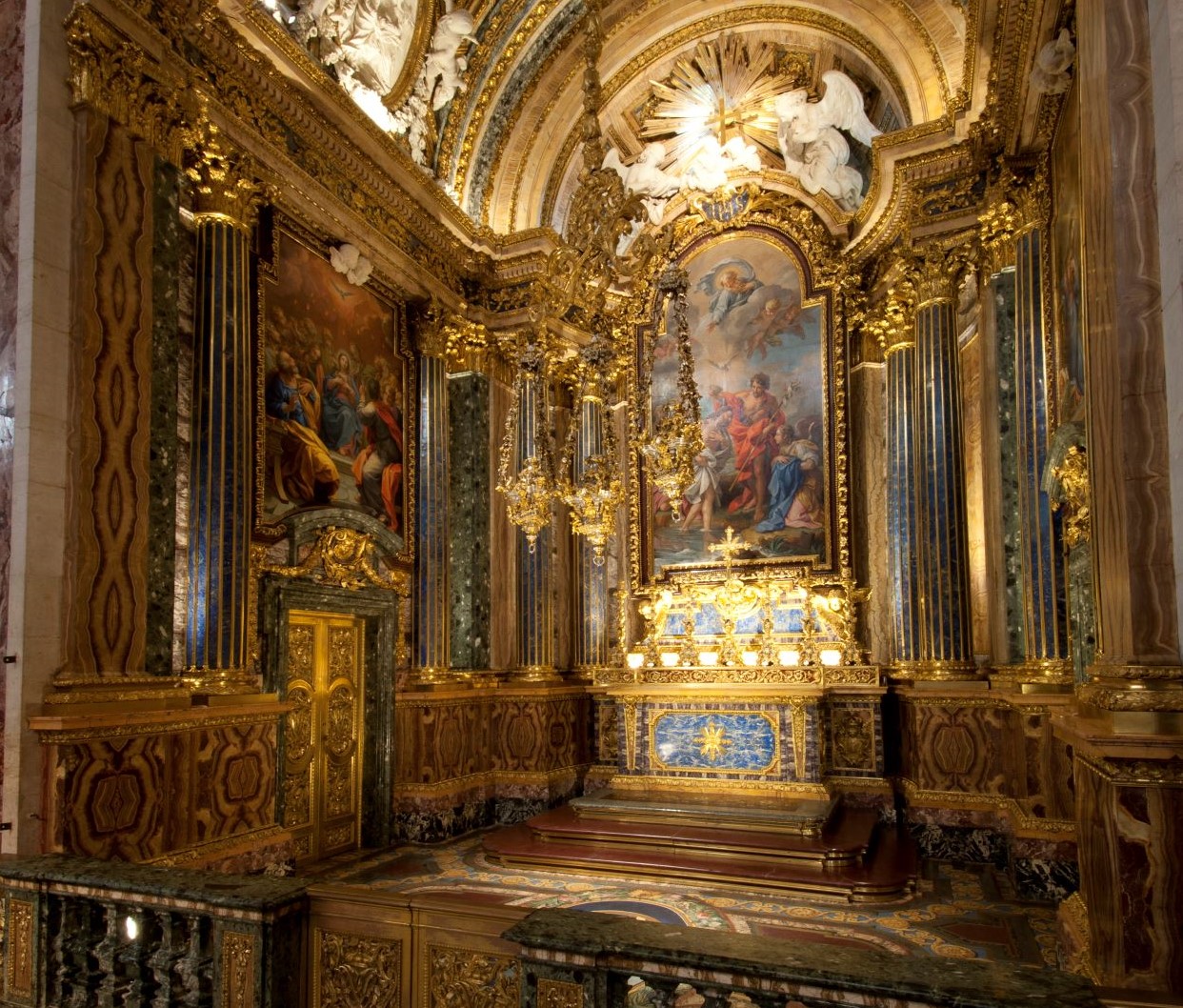
Casa Professa de São Roque
Largo Trindade Coelho
Intended to protect the population of Lisbon from the plague, D. Manuel ordered a relic of Saint Roque from Venice. To accommodate it, a hermitage was built in 1506 which, years later, donated to the Jesuits, gave rise to the order’s Professed House and the Church of São Roque, from the second half of the 16th century onwards, the headquarters of the Society of Jesus.
Inside the temple, the Mannerist and Baroque interior combines the best marble, gilded carving, painting, sculpture and tiles, highlighting the chapel of São João Baptista, commissioned by D. João V from Roman architects, built in Rome and sent to Lisbon in 1742. Four years after the great earthquake, which did not structurally damage the building, the Marquis of Pombal promulgates the “Law given for the proscription, denaturalization and expulsion of the regulars of the Society of Jesus”. The Church, the Casa Professa and the entire collection were donated, in 1768, to the Santa Casa da Misericórdia in Lisbon.
Classified as a national monument in 1910, in addition to the temple, the building currently houses the São Roque Museum and its notable (and unmissable) collection of Portuguese sacred art.
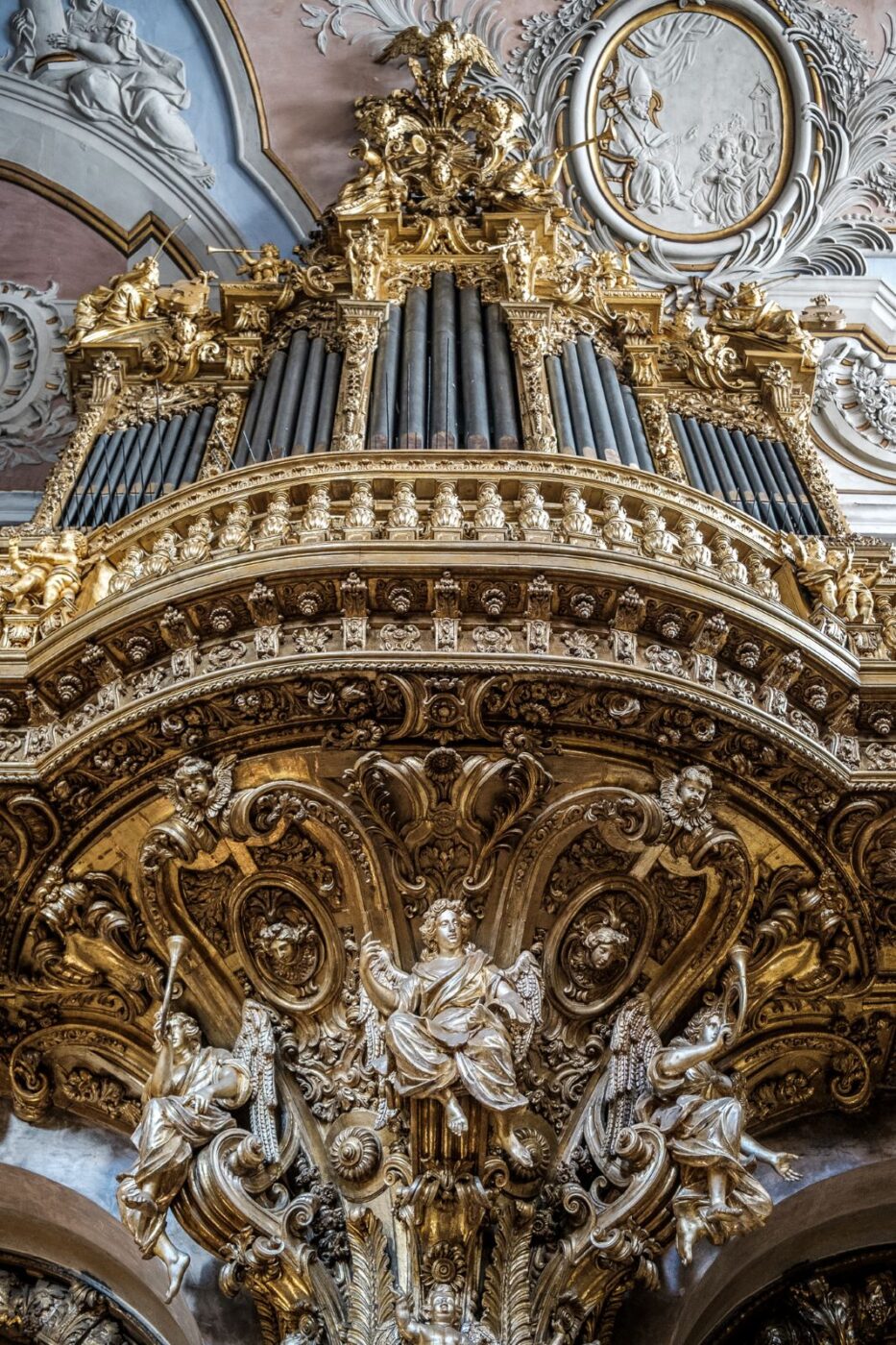
Mosteiro de São Vicente de Fora
Largo de São Vicente
The current building, in Mannerist style, designed by Filippo Terzi and Juan de Herrera, was built in 1582 by King Philip I of Portugal. The name “Fora”(“outside”) is justified because it is located outside the old Cerca Moura, since the founder of the first temple was D. Afonso Henriques, a deep devotee of São Vicente, in 1147.
Occupied by canons of the Regular Order of Saint Augustine, from its foundation until 1834, the date of the extinction of religious orders, the monastery keeps in memory the passage of Saint Anthony, as it was here that he lived his first days as a monk. Currently, the building hosts the services of the diocesan curia and is the place where the Cardinal Patriarch of Lisbon governs the diocese.
In addition to the curia, administrative services and Patriarchal Court, São Vicente de Fora also houses a museum that seeks to record the most important moments in the history and legacy of the Patriarchate of Lisbon. Unmissable on any visit, the wonderful 19th century organ, the monumental canopy over the main altar designed by Machado de Castro, and the panoramic view of Lisbon and the Tagus from the terrace.
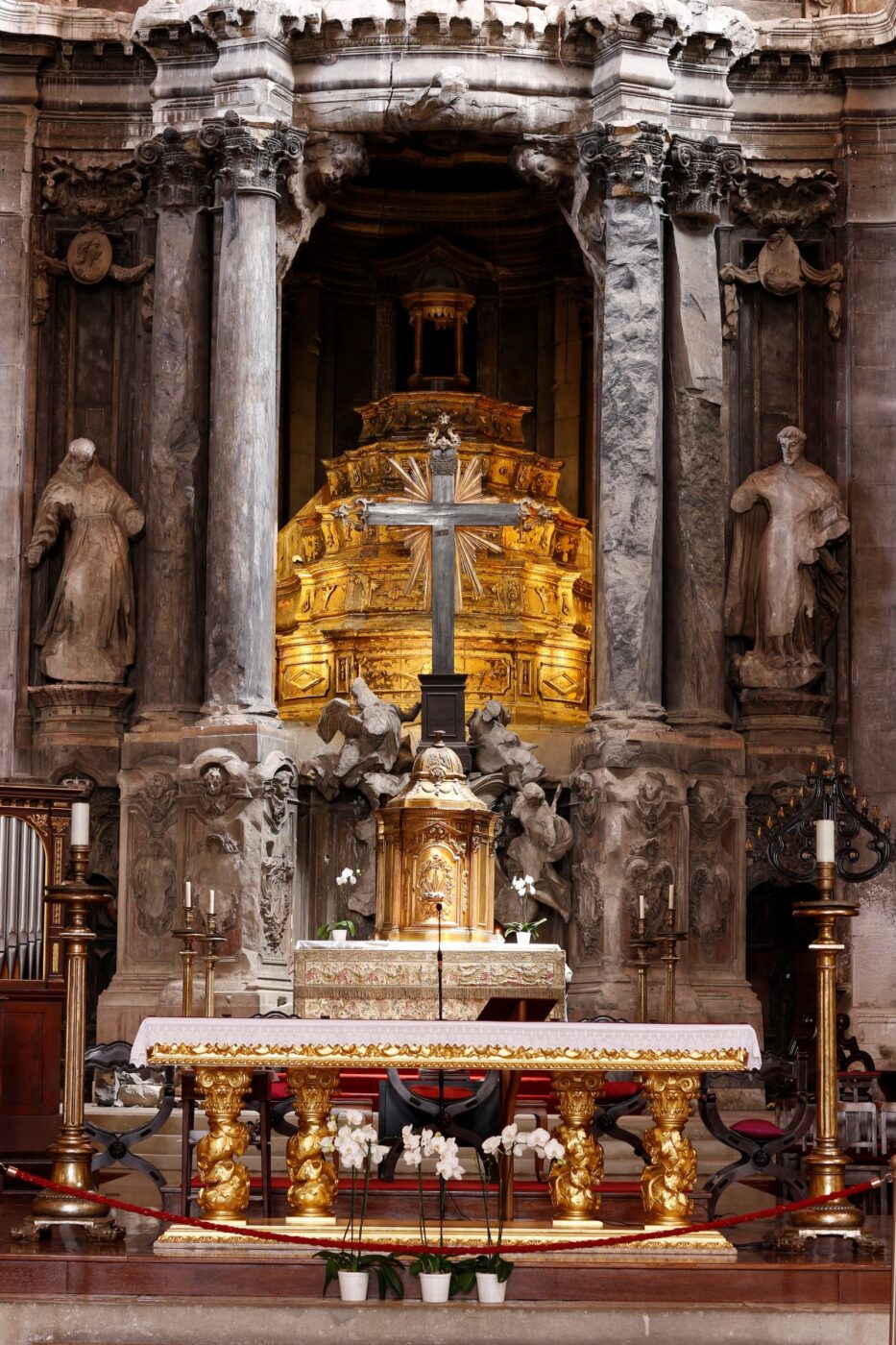
Convento de São Domingos de Lisboa
Largo de São Domingos
In one of the city’s most cosmopolitan squares stands the São Domingos Parish Church, a temple belonging to the first Dominican convent in Lisbon, founded in 1241. On the grounds surrounding the complex, the so-called Horta dos Frades, the Royal Hospital of All Saints was built from 1492 onwards.
Strongly affected by the 1755 Earthquake, the Convent of São Domingos was radically altered by the Baixa reconstruction project, namely with the construction of dormitories in the large block that delimits Rossio Square. After the extinction of religious orders, in the 19th century, the convent area was partially demolished with the opening of Rua de Dom Antão de Almada and Travessa Nova de São Domingos.
Although it suffered a violent fire in 1959, which destroyed practically the entire interior and roof, the current Church of São Domingos stands out, above all, for its symbolic heritage, since those condemned to the burnings of the Inquisition left from here in procession, but some of the royal weddings and baptisms were also celebrated here.

Mosteiro dos Jerónimos
Praça do Império
Classified as UNESCO world heritage site in 1983, it is impossible not to mention the grand monastery without mentioning the two Manueline portals, the vaults of the church’s naves, the Mannerist altarpiece in the main chapel and its baroque silver tabernacle, or its cloister with a profusion of detailed decorations with maritime and exotic elements. And, of course, the royal tombs and those of Luís Vaz de Camões and Vasco Gama.
Ordered to be built by decision of D. Manuel in 1496 for the monks of the Order of Saint Jerome, the best example of Manueline religious architecture, under the design of Diogo Boitaca, João de Castilho and Nicolau de Chanterenne, it succeeded a small hermitage dedicated to Saint Maria de Belém – in fact, the name of the current church is precisely this -, ordered to be built a few years earlier by Infante D. Henrique, next to the old beach of Belém.
It is said that it took more than 100 years to build, channeling much of the so-called “Vintena da Pimenta” during the golden period of the Discoveries, that is, the equivalent of 70 kilograms of gold per year.